Wrist Hurts When Doing Pushups / After Pushups: Signs, Stretches, and More
Wrist pain is a common complaint among calisthenics enthusiasts and weightlifters alike - especially after a set of intense push-ups.
Because push-ups place a significant amount of pressure throughout the wrists, forearms and hands, this sort of discomfort should be addressed so as to ensure no serious injuries have been developed.
If you’re experiencing wrist pain during or after a set of push-ups - stop doing them for now. Give your wrists time to recover, and investigate possible causes behind the pain. Unless these issues are corrected, it is likely that the pain will simply return.
The Role of the Wrist During Push-Ups
In truth, the wrists are not meant to play much of any role during a push-up.
If performed with proper form, the wrists remain entirely static in an extended position, and are simply the foundation atop which the torso supports itself; No dynamic movement is meant to occur.
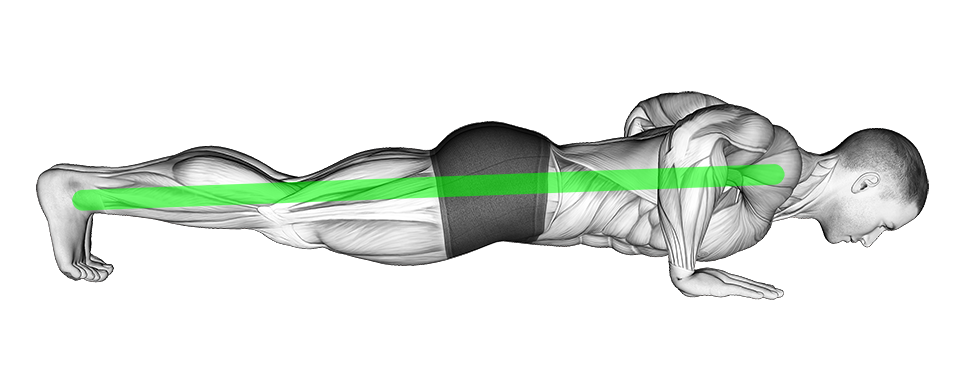
While this does mean that the wrists have to bear a significant amount of the body’s weight, the majority of healthy individuals do not have to worry about sustaining injuries because much of the pressure is evenly distributed throughout the arms.
However, in cases where the exercise is performed incorrectly or to excess, the wrists can indeed become injured - creating symptoms of pain, tingling, swelling and general discomfort. Even if your form and programming are optimal, there are still several reasons why you may be experiencing wrist pain after push-ups.
Possible Causes of Wrist Pain When Doing Push-Ups
Although we’ve listed the possible causes of push-up wrist pain here, remember that this article is no substitute for actual medical diagnostics.
Seek out the advice of a physician if you suspect you’ve sustained a wrist injury.
Poor Stance or Form
The most common reason why wrist pain is experienced after push-ups is poor form. This could be from unintentionally launching off the hands during the latter half of the movement, or even a result of a stance that is too narrow.
Here's a video of correct push up form:
Regardless of the severity of your wrist pain (or if you have it at all), it is vital to perform push-ups with optimal form and correct technique. If you’re having trouble truly mastering push-up execution, try seeking out the advice of a professional coach.
Shortened Wrist Mobility or Stability
Be it due to previous injuries, age or simply insufficient preparatory work - the wrists can suffer from poor mobility and instability, leading to injuries when strained.
Of particular importance is the wrist’s capacity to sustain pressure while in an extended state, as is its position during a traditional push-up stance. Poor mobility will not only cause the wrists to hurt during a push-up set, but can also entirely prevent wrist extension in the first place.
This issue is corrected by performing wrist mobility drills and strengthening the muscles related to its biomechanics. We’ve listed a few examples later in the article.
A History of Injury
If a history of injuries to the wrists is present, it is possible that the pressure of the push-up has caused these injuries to re-emerge - or that the symptoms of the injury still persist, even after it has been deemed healed.
Because it can be difficult to determine whether wrist pain is caused by a previous injury or an entirely new one, it is best to seek out medical diagnostics prior to deciding on a course of treatment.
Tendinopathy, Carpal Tunnel, Tenosynovitis and Other Chronic Overuse Injuries
Occasionally, wrist pain from push-ups could also be a result of simply performing the exercise too much. This is known as an “overuse injury” and can affect both the soft tissue and bone tissue of the wrists.
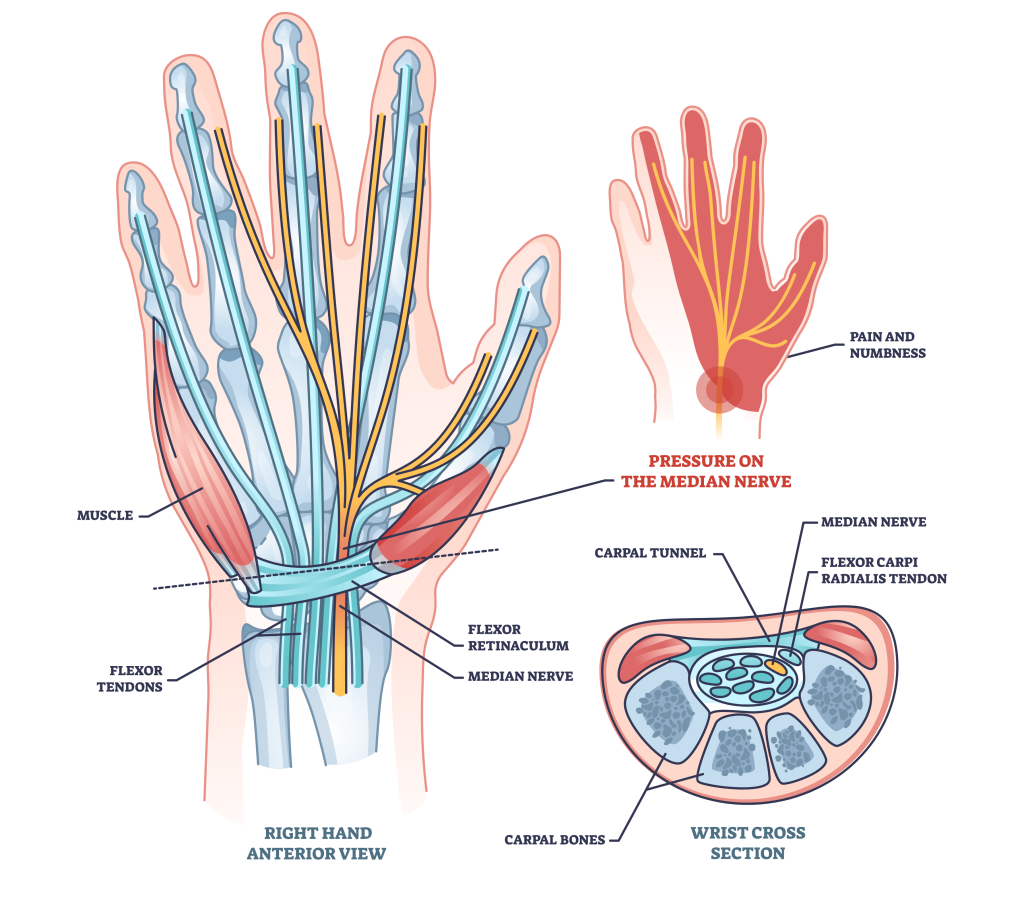
Such conditions are often characterized by inflammation, swelling and a shortened range of motion of the wrists. More frequently, they are seen in professional athletes and workout enthusiasts, rather than individuals who only occasionally engage in exercise.
Although overuse injuries sometimes heal on their own if given enough recovery time, it is best to seek out the advice of a medical professional who can assess the nature of the injury and prescribe medications to reduce inflammation.
Sprains, Tears and Similar Acute Injuries
Apart from chronic overuse injuries, acute injuries can also occur if the lifter is pushing themselves too far beyond their limits - or performing the push-up with grossly incorrect form.
For the wrists, these are most likely a sprain or tear of the forearm’s connective tissues. Treatment for acute injuries like these are much the same as any other injury, where the lifter is instructed to abstain from exercise, ice the afflicted area and follow the advice of their doctor.
What to do When the Wrists Hurt From Push-Ups
If you’re suffering from wrist pain during or after a set of push-ups, follow these steps.
Rest and Recover
The first step to take when experiencing push-up wrist pain is to stop performing push-ups.
A sufficient amount of time must be allotted for the body to recover. This period of healing can last from anywhere between two weeks and several months, depending on the severity of the injury.
Apart from avoiding any sort of activities that can interrupt your wrist’s recovery, it's important to also follow the best practices for ensuring recovery takes place. Elevate the wrists, compress them and take any medication prescribed to you by your physician.
Rule Out More Serious Causes
Once you’ve stopped performing push-ups and other wrist-straining activities, the next step is to ensure that the pain is not caused by any serious medical causes.
To do so, speak to a medical professional about your symptoms. If there is indeed cause for concern, they will order diagnostic tests be performed, of which will reveal the nature of your injury.
If the pain is caused by little more than poor form or a minor injury, the physician may advise you to perform light physical rehabilitation at home.
Perform Wrist Mobility and Strengthening Drills
Once sufficient recovery time has passed and you’ve been cleared for low impact movement, performing mobility drills and strengthening exercises for the wrists will help reduce the risk of future injury.
Two aspects of the wrist will need to be reinforced in order to properly rehabilitate it - mobility and stability. For mobility, stretches that work the wrist through a full range of motion will be needed, whereas simple low-impact resistance exercise will improve its stability.
Properly rehabilitating the wrists is not only a requirement for preventing further injury, but will also ensure that any current damage to it will not affect its functionality as a joint.
Check Your Push-Up Technique
Once your wrists are fully recovered and capable of withstanding the rigors of exercise, checking your push-up form is the final step to preventing further pain.
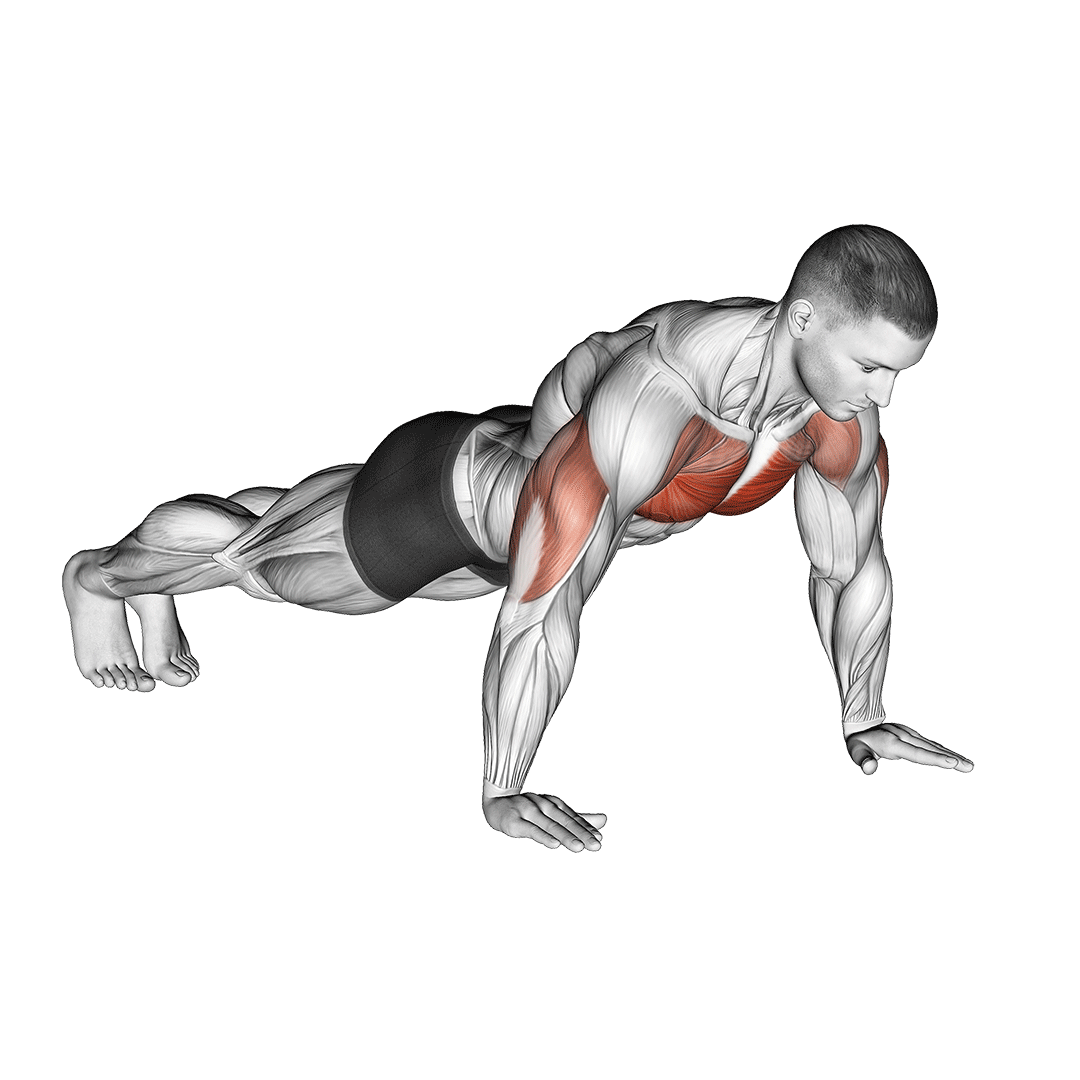
Assess the position of your hands during the standard push-up stance, the direction the fingers are pointing and how the elbows bend as you descend.
A push-up performed with correct form will have the hands parallel to the shoulders, with the fingers splayed but pointed forwards. As you descend, the elbows should not bend straight out to the sides, but instead point behind you.
Try Out an Alternative Exercise
Finally, if you’ve tried everything else but still feel pain when performing push-ups, it may be time to switch to an alternative exercise.
Unfortunately, not all exercises are compatible with every type of individual. Characteristics like bodily proportions, simply being too heavy or a history of wrist injury can all make the push-up a poor exercise to perform.
This doesn’t mean that you need to stop performing upper body exercises entirely, however. If your wrists only hurt while in a state of extension, then performing a push-up modification that uses a different wrist orientation is a perfectly fine solution.
Likewise, if the issue stems from things like poor wrist tissue integrity or incompatibility with push-up mechanics, then substitute exercises like the pec deck and cable fly bypass both problems entirely.
Wrist Strengthening and Stretching Exercises for Push-Ups
Because push-ups place the hands in a static position while in a state of extension, you’ll need to improve your wrists capacity to be in such a state prior to returning the push-up.
The following stretches and exercises are meant to do just that.
However, keep in mind that injuries that affect wrist flexion or grip strength will not be addressed by these, as the following are meant to reinforce wrist extension ROM and stability.
1. Wrist Extension Stretch
The wrist extension stretch is a dynamic low-impact movement, and may be performed while lying down or seated. As the name states, it is a stretch meant to improve the wrist’s capacity to extend.
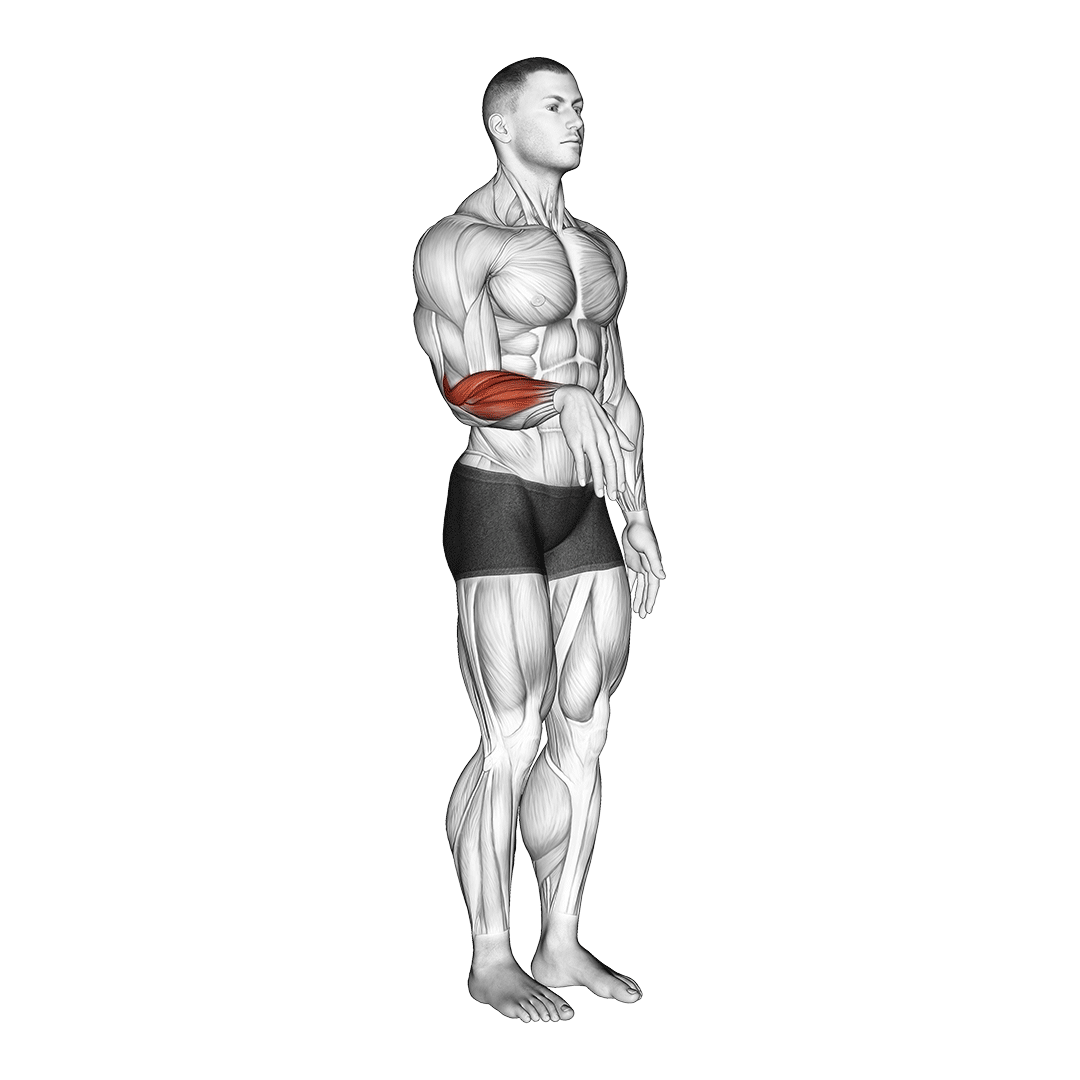
How-to:
Extending one arm forwards with the palm pointed up, take the other hand and pull the fingers of the outstretched hand backwards.
A stretch should be felt in the palm and the inner section of the wrists. Hold this position for several counts before repeating with the opposite hand.
2. Wrist Rotations
Wrist rotations are meant to improve the wrist’s capacity to rotate the hands. Like the previous stretch, it can be performed sitting or lying down, and is considerably low-impact.
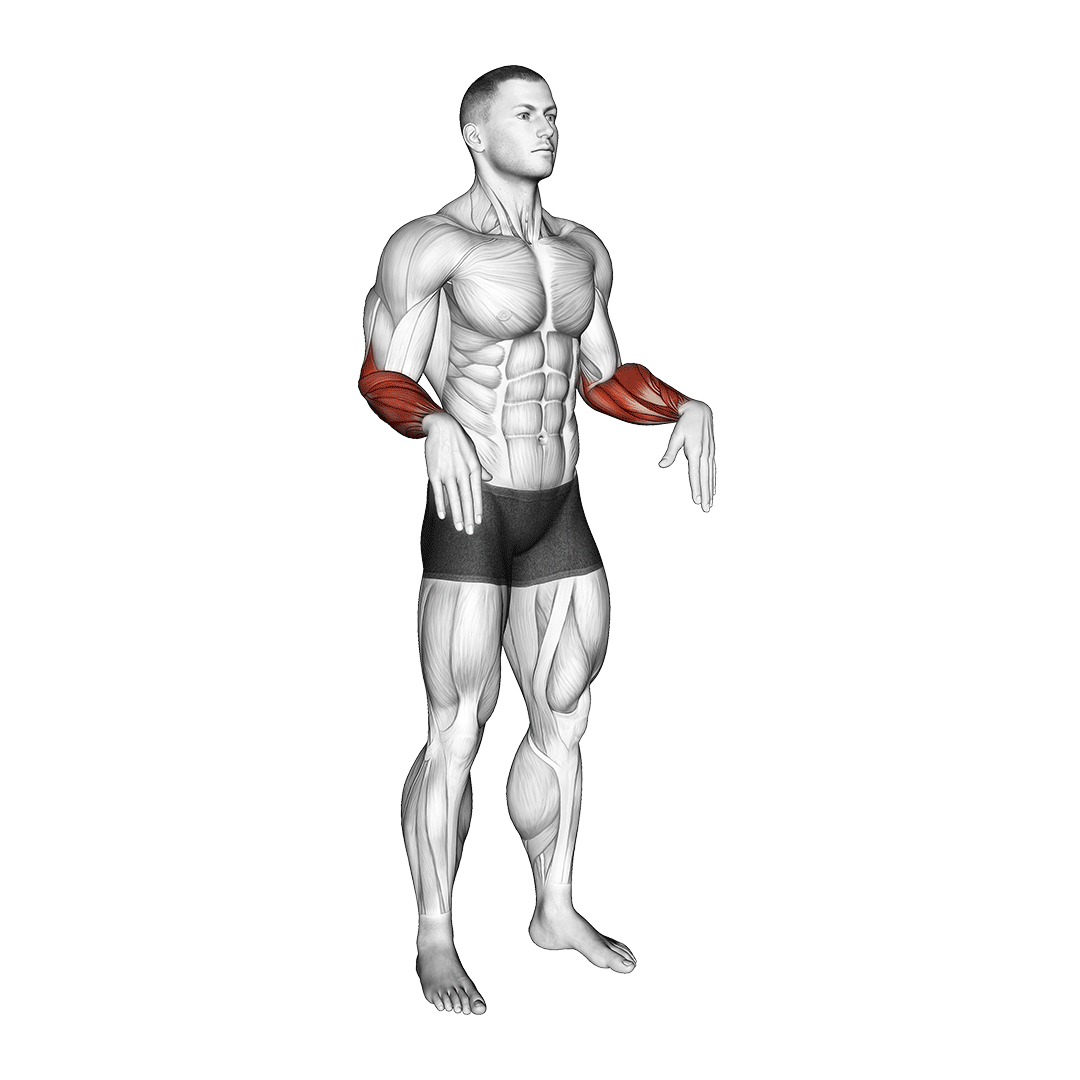
How-to:
Loosely rotate the fist clockwise for several circles. Once complete, repeat the movement in the opposite direction.
3. Dumbbell Wrist Extension
Dumbbell wrist extensions are a resistance exercise used to rehabilitate the wrist extensor muscles. For the purposes of push-ups, this is done to improve the stability of the wrist throughout the exercise.
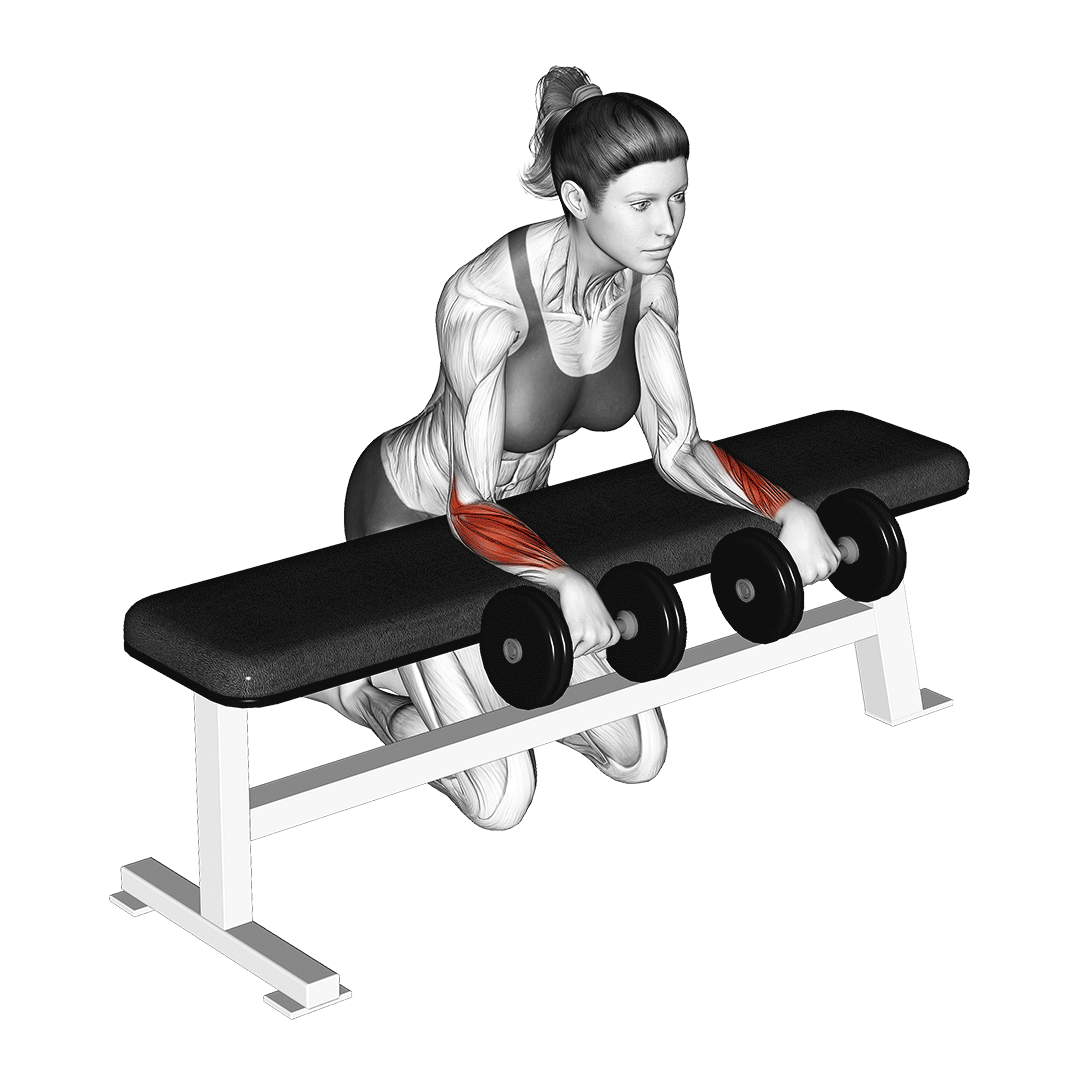
How-to:
Gripping a light dumbbell, place one hand palms-down atop your knee or an exercise bench, allowing the hand to hang loosely off the end.
Then, doing so as slowly and carefully as possible, raise the dumbbell upwards until reaching the limit of your range of motion. Lower the hand back down in a similar manner.
Push-Up Alternatives for Wrist Pain
If you’ve decided to avoid performing the traditional push-up altogether, try out the following alternatives - all of which are considerably easier on the wrists.
1. Pec Deck Machine
The pec deck machine is a chest isolation exercise that - unlike the push-up - can be performed with little to no pressure on the wrist. This makes it perfect for people with bad wrists, or those who wish to avoid a recurring wrist injury.
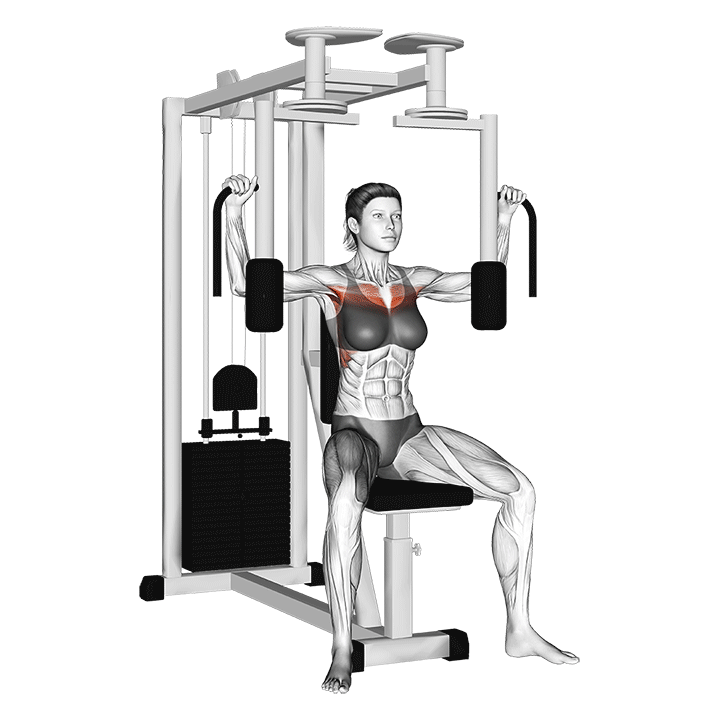
2. Push-Up Handles
Push-up handles are a type of training equipment used for performing push-ups with a neutral wrist orientation.
Apart from elevating the hands off the ground, they will also allow for conventional push-ups to be performed without straining the wrists as they are in a disadvantageous position.
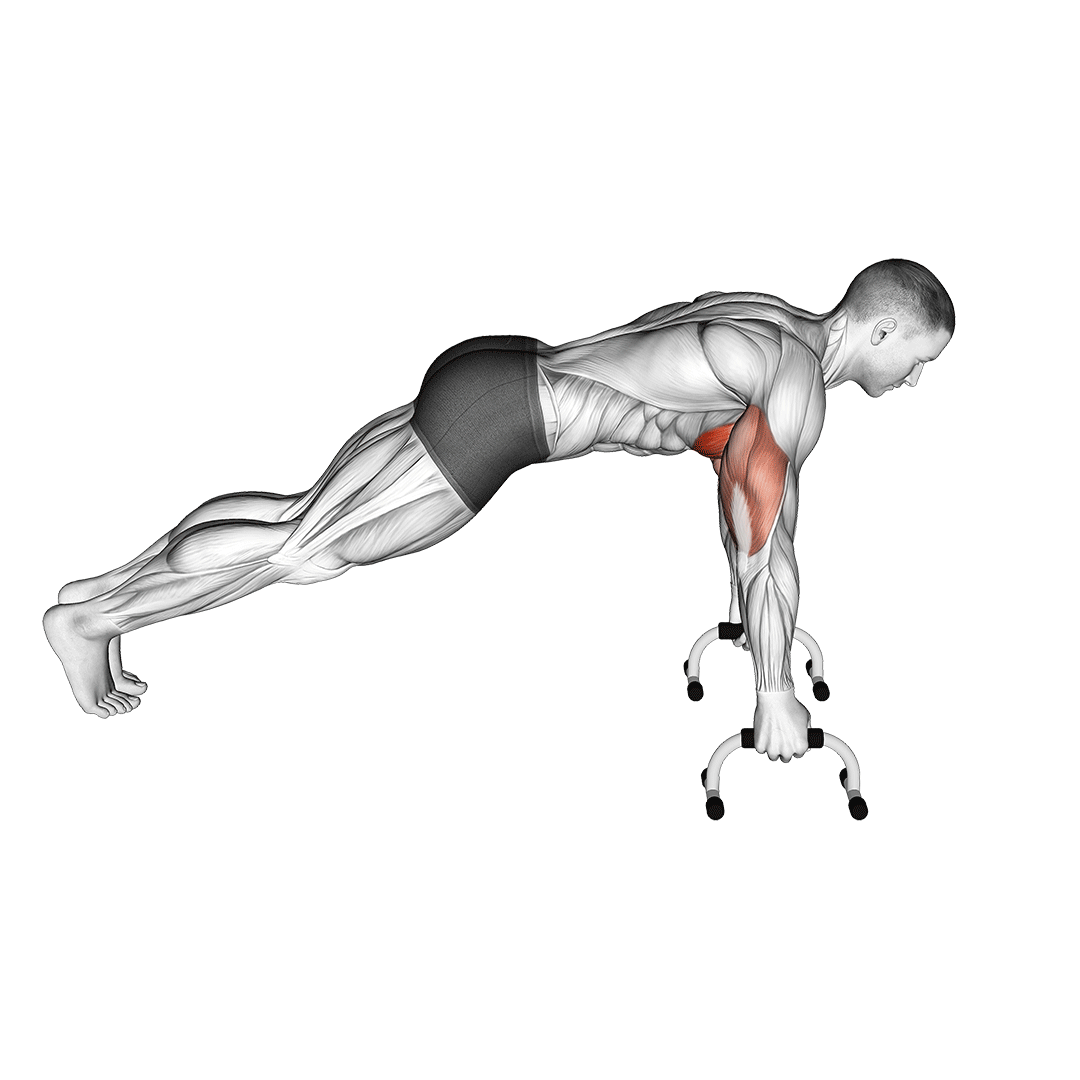
3. Knuckle Push-Ups
As an alternative to push-up handles, athletes with suitable wrist integrity but incompatibility with the standard push-up can try performing the exercise on their knuckles instead.
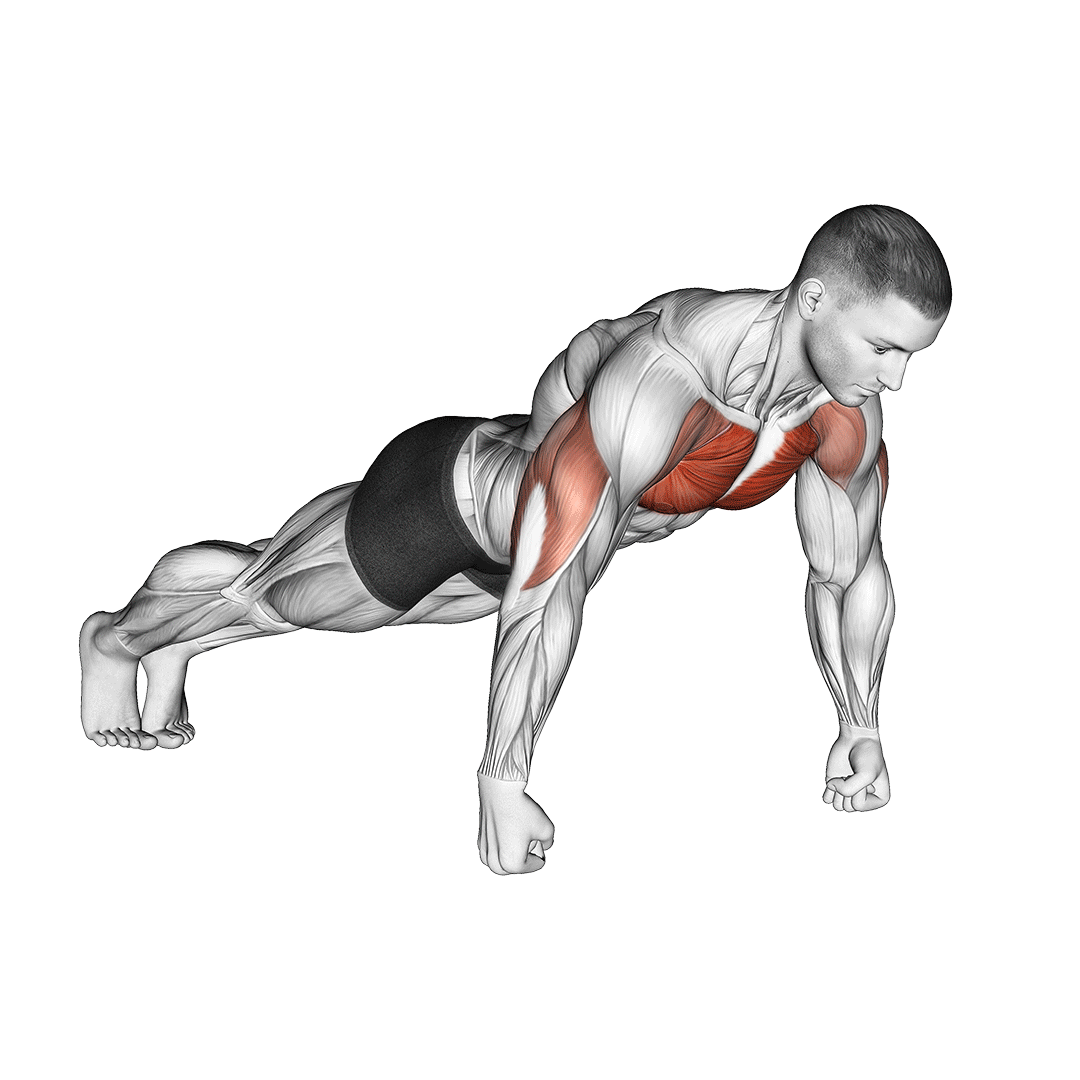
In all other aspects, knuckle push-ups are the same as their traditional counterpart - the sole difference is that the hands are balled into fists, with the wrists aligned with the rest of the forearm for greater distribution of pressure.
Conclusion
Wrist pain from push-ups is rarely a cause for serious concern - but it should nonetheless be corrected as soon as possible.
In addition, keep in mind that the push-up is not the only exercise of its kind. There are plenty of modifications, alternatives and variations that do not strain the wrist to the same extent.
Regardless of whether you’ve chosen to continue performing them or not, remember to cease any strenuous activities involving the wrists if an injury is suspected. Prioritize safety and recovery as much as possible.
References
1. Polovinets, Olga & Wolf, Alon & Wollstein, Ronit. (2017). Force transmission through the wrist during performance of push-ups on a hyperextended and a neutral wrist. Journal of Hand Therapy. 31. 10.1016/j.jht.2017.04.005.
2. Alvin, Alvin & Fauzi, Moch & Zia, Jihad & Mukhtar, Eldita & Putra, Eki & Ferryanto, Fulgentius. (2022). RISK OF INJURY COMPARISON BETWEEN REGULAR AND KNUCKLE PUSH-UP BASED ON KINEMATIC PARAMETER ANALYSIS. Jurnal Rekayasa Mesin. 13. 343-349. 10.21776/jrm.v13i2.941.

